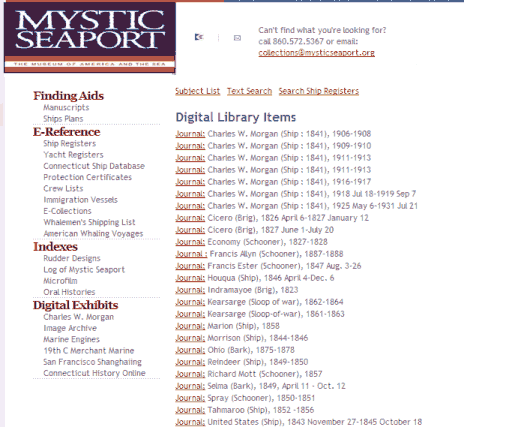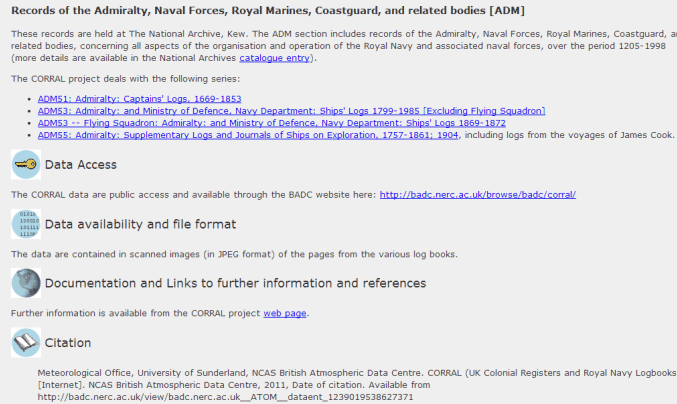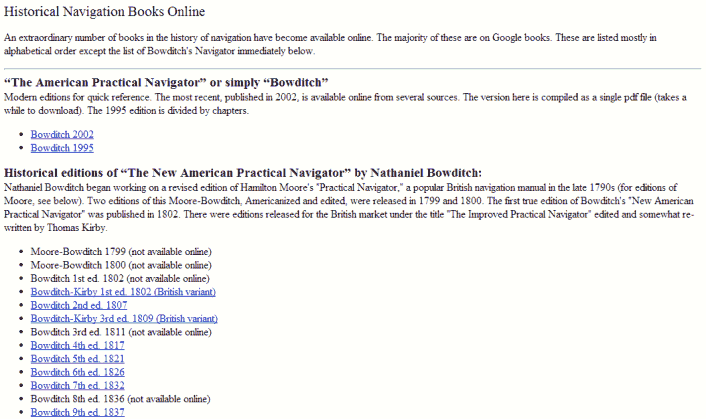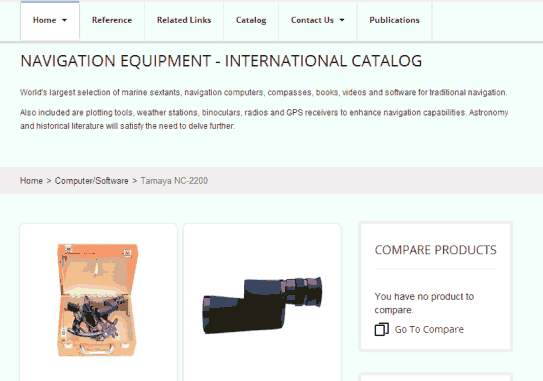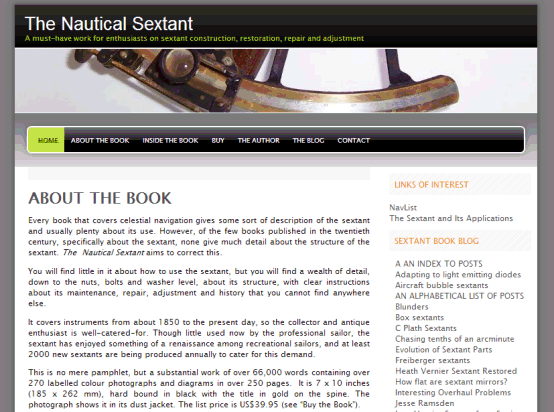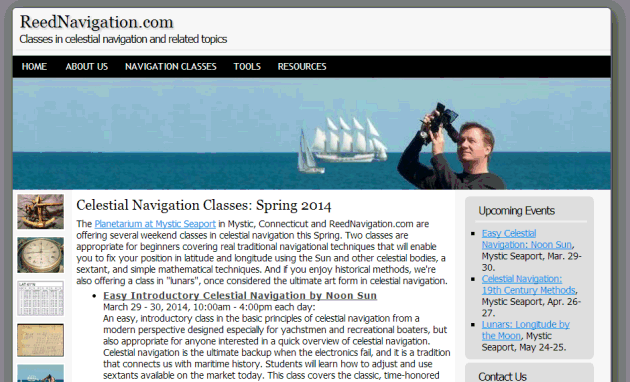
NavList:
A Community Devoted to the Preservation and Practice of Celestial Navigation and Other Methods of Traditional Wayfinding
Re: Fatal interaction betweeu yacht and ferry.
From: Gary LaPook
Date: 2007 May 08, 01:14 -0700
From: Gary LaPook
Date: 2007 May 08, 01:14 -0700
Gary replies:
There is a slight tolerance allowable before serious degradation of the reflected signal occurs but I couldn't agree more, that is why I used fairly heavy aluminum plates, I don't have the thickness handy, but they are entirely rigid. Since the sheets came already cut with 90º corners it was fairly simple to make the angles come out right where the plates are joined. It's also important to aim the bucket at the other ship so as to keep near the axis of the bucket since the reflected strength drops off as you move away from the axis. The half power point is at about 20º off axis so this isn't to difficult to accomplish and I have fitted a basic sight to make this easy. And, at the half power point, it is still giving a return 16 times that of a standard radar reflector that is aimed perfectly which, of course, never happens since a normal radar reflector's orientation is basically random. BTW, I am not saying one shouldn't use a conventional radar reflector, get the biggest one you can fit since even a slight increase in size makes a big difference in the performance. Then keep the big one corner reflector as a backup when you are aware there is the threat of collision. It is like using your running lights but having a spotlight to show in the same situation. Regarding your concern about the precision of the construction I don't know why some company doesn't manufacture one similar to mine, it isn't rocket science.
Lu Abel wrote:
--~--~---------~--~----~------------~-------~--~----~
To post to this group, send email to NavList@fer3.com
To , send email to NavList-@fer3.com
-~----------~----~----~----~------~----~------~--~---
There is a slight tolerance allowable before serious degradation of the reflected signal occurs but I couldn't agree more, that is why I used fairly heavy aluminum plates, I don't have the thickness handy, but they are entirely rigid. Since the sheets came already cut with 90º corners it was fairly simple to make the angles come out right where the plates are joined. It's also important to aim the bucket at the other ship so as to keep near the axis of the bucket since the reflected strength drops off as you move away from the axis. The half power point is at about 20º off axis so this isn't to difficult to accomplish and I have fitted a basic sight to make this easy. And, at the half power point, it is still giving a return 16 times that of a standard radar reflector that is aimed perfectly which, of course, never happens since a normal radar reflector's orientation is basically random. BTW, I am not saying one shouldn't use a conventional radar reflector, get the biggest one you can fit since even a slight increase in size makes a big difference in the performance. Then keep the big one corner reflector as a backup when you are aware there is the threat of collision. It is like using your running lights but having a spotlight to show in the same situation. Regarding your concern about the precision of the construction I don't know why some company doesn't manufacture one similar to mine, it isn't rocket science.
Lu Abel wrote:
Gary: You seem to know a lot about radar reflectors, so I'm surprised you didn't mention what many consider the most crucial aspect of radar reflector construction: that the angles between the plates must be an accurate 90 degrees. Since the radar signal bounces off one plate and then another, only by having a very accurate 90 degree corner is it guaranteed that the incoming radar pulse will be returned to the radar that emitted it! For this reason many experts advise against home-brew radar reflectors (I can't tell you the number of times I've read letters to the editor of various sailing publications with people bragging about constructing a reflector out of bits of cardboard covered with aluminum foil). Comments welcome. Lu Abel Gary LaPook wrote:Gary wrote: I read this entire report which was very interesting. What will put the fear of god in you is the finding that even with their Davis radar reflector mounted, that the probability of detection was still minimal. Allot of sailors rely on those things. I looked at the issue of radar cross section in the past and built my own radar reflector. The standard reflector, like the one in this incident consists of three mutually perpendicular plates which form 8 corners so as to reflect radar energy back in the direction that it came from, these corners are aligned to cover the horizon. Unfortunately, there are deep nulls in the reflective pattern so there are many gaps in the pattern. The Davis reflector on this boat is 12.5 inches in diameter meaning that the edge where the plates meet to form each corner is only 6.25 inches. Only one of the corners is effective for any particular radar beam so the rest of the reflector has no value, the strength of the echo is determined by the one corner or "bucket" facing the radar transmitter. If you do the calculation for a bucket with a 6.25 inch edge circular edge (such as the davis) for x-band radar (9.4 ghz, lambda or wavelength of 3.2 cm) you find the radar cross section has a maximum value of 9.7 meters ^2. If you do the same calculation for an s-band radar (3 ghz, 10cm wavelength), the kind used by large ships when off soundings, you find only 1.0 meters^2 since the effectiveness of a corner reflector varies inversely with the square of the wavelength. The effectiveness also varies with the shape of the plates and with the length of edge where the plates are joined. A corner reflector made of plates that are square rather than round, as in the davis, returns an echo 2.42 times as strong than the round plates. But the main determinant of strength is the length of the edge. The strength of the echo varies with the length of the edge to the fourth power. If you double the length of the edge you increase the echo 16 times! So if you combine these two factors and make a radar reflector with square plates that is twice as big you increase the strength of the echo by almost 39 times. So if you make a reflector that has 12.5 inch buckets the RCS is 379 meters^2 for an x-band radar and 38.4 at s-band. O.K. this would be too big to hoist aloft. So what I decided to do was to make a radar reflector with just one bucket that I could aim at any ship that I thought might be a hazard. This would be much more effective than shinning a flashlight on the sails since it would set off the automatic alarm on the radar scope. I got 3 sheets of aluminum 12 inches square and joined them with two hinges so that it can fold flat when not in use. It is a simple matter to take it out and unfold it and aim it at the ship. Opened, it is slightly smaller than the Davis radar reflector but returns an echo in the direction of the radar of 318 meters^2 at x-band and 32.6 meters^2 at s-band, thirty three (33) times stronger than the standard radar reflector. I haven't been run over yet. gl George Huxtable wrote:Fatal interaction between yacht and ferry. There's quite a lot to ponder, in the highly workmanlike report of the UK's Marine Accident Investigation Branch, into the sinking last Summer of the yacht "Ouzo", off the Isle of Wight, resulting in the death of all three aboard her. Go to- http://www.maib.gov.uk/publications/investigation_reports/2007/ouzo.cfm and from that download the fifty-odd page report Ouzo_.pdf at about 1.4 MB. Other options are a short synopsis, and a bulky technical appendix, mainly about photochromic spectacles and radar detection of small craft. The MAIB brief is to find out what happened, and it seems to me they have bent over backward to avoid apportioning blame. The second officer of the P & O ferry, "Pride of Bilbao", is due to stand trial for manslaughter, later this year, as a result. My reaction, and I suspect that of many other sailors, is to think "There, but for the grace of God, go I". And no doubt many ship's officers will,>from another viewpoint, think exactly the same, .It surprises me that the master, though he was below at the time, appears not to be bearing any of the responsibilty. I won't comment further, to avoid prejudicing those that prefer to make up their own minds. Read it yourself. George. contact George Huxtable at george@huxtable.u-net.com or at +44 1865 820222 (from UK, 01865 820222) or at 1 Sandy Lane, Southmoor, Abingdon, Oxon OX13 5HX, UK. contact George Huxtable at george@huxtable.u-net.com or at +44 1865 820222 (from UK, 01865 820222) or at 1 Sandy Lane, Southmoor, Abingdon, Oxon OX13 5HX, UK.
--~--~---------~--~----~------------~-------~--~----~
To post to this group, send email to NavList@fer3.com
To , send email to NavList-@fer3.com
-~----------~----~----~----~------~----~------~--~---

